BY: ANGELINA SCHIANO
My boyfriend’s mom takes Christmas cookies very seriously.
We’re talking at least six different types of cookies every year, perfectly arranged on platters and magically produced any time a guest walks into the house.
This year, she had a proven chocolate crinkle cookie recipe but planned on making an important substitution after coming across “The Ultimate Guide to Chocolate Chip Cookies,” a cute graphic on Pinterest developed by Tessa Arias of Handle the Heat. The guide, in the vein of similar posts discussing the science of cookies or ingredients that affect your cookies, shows a neat row of cookies, each prepared with a slightly different method than the last.
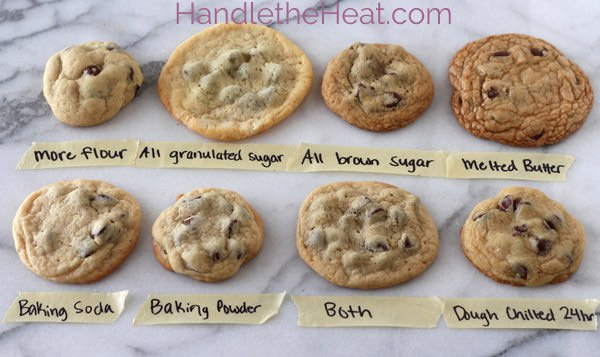
Handle the Heat’s Ultimate Guide to Chocolate Chip Cookies (Photo Link)
Butter makes for notoriously delicious cookies, and many home cooks are tempted to substitute it for less flavorful fats such as shortening. But guides such as Arias’ warn substituting butter for shortening can cause cookies to spread to an undesirably large size. To counteract this, my boyfriend’s mom chilled the dough, a trick recommended by the blogger’s guide to reduce cookie spreading.
She left the dough in the fridge overnight and baked the cookies the next morning. To her surprise, while they were delicious, the usually light and puffy crinkle cookies (see this post’s cover photo) were completely and utterly flat.
So, what happened? She followed the recipe perfectly, though slightly deviated with her well-researched, intentional substitution of butter for shortening. Were the Pinterest guides lying? Was the butter to blame? What caused the cookies to be flat?
Controlling Cookie Shape
In order to understand why the crinkle cookies deflated, we need to understand what factors control cookie shape. Obviously, this varies greatly depending on the type of cookie, so we’ll try to keep it general here when it comes to the different factors that might influence shape.
1. Flour
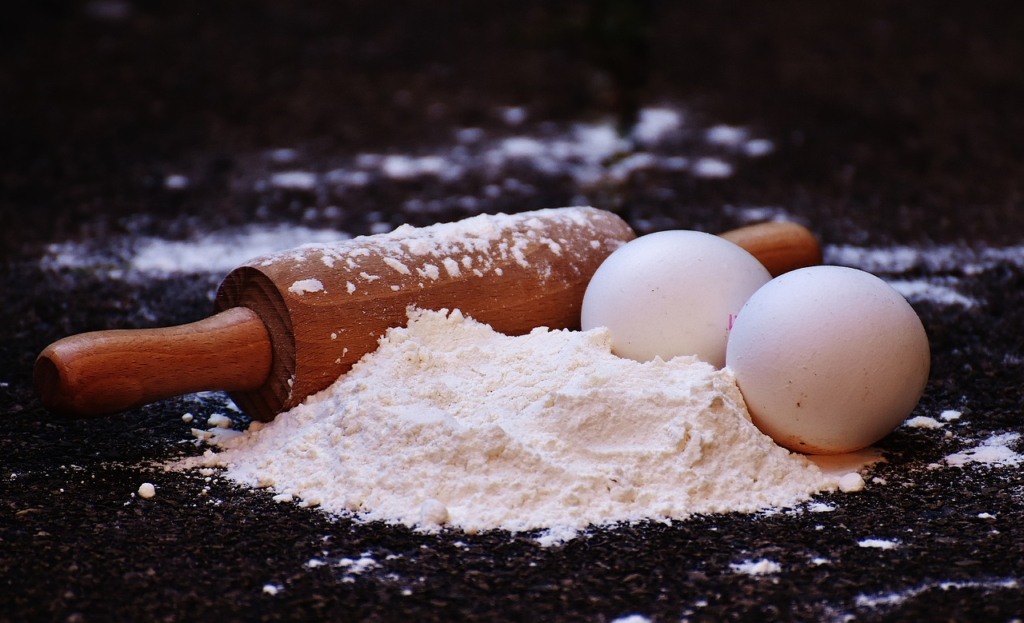
Today, flours in cookies can be made from anything from almonds to chickpeas. My boyfriend’s mom’s crinkle cookie recipe used wheat flour, so this blog post will focus only on wheat flour cookies.
Cookies made with wheat flour contain gluten, which is a network made up of wheat proteins glutenin and gliadin linked together1. During mixing, interactions between these proteins increase, forming a gluten network2. At the same time, starch granules from the flour swell with moisture from the dough.
During baking, the hydrated starch swells further and eventually bursts, thickening the cooking dough and impeding spreading3. The gluten network “sets,” locking in the final cookie shape4,5.
Imagine a bunch of wheat proteins playing a game of Twister. The longer the game continues, the more tangled up the proteins get. Eventually, no one can move at all.
Obviously, gluten can’t play Twister, but the protein network behaves in a similar fashion during mixing and baking.
Flour, however, wasn’t the culprit in the case of the crinkle cookies. To understand what caused the mysterious flattening, we’ll have to investigate further.
2. Temperature
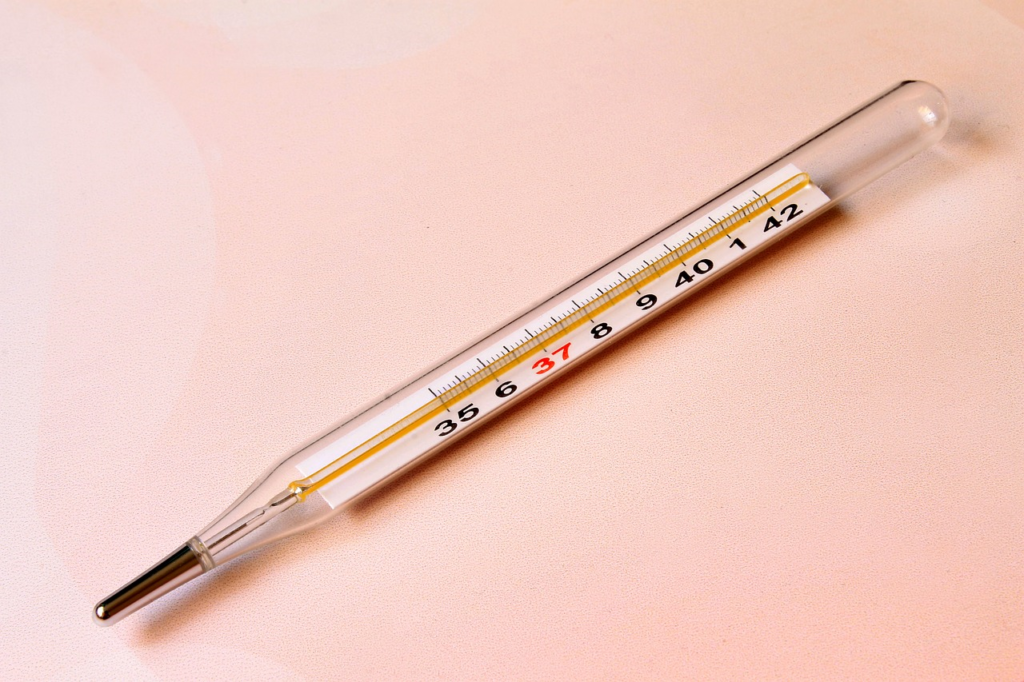
As cookies bake, fat melts and the gluten network (formed by the flour) sets. The more the fat melts before the gluten sets, the flatter your cookies. We’ll discuss this a bit more in the next section.
The intricacies of gluten and fat melting are outside the scope of this post. For now, understand that changing the temperature can affect the rate of fat melting and the rate of gluten setting in different, and often difficult-to-predict, ways6.
To solve the mystery of the flat crinkle cookies, let’s gloss over temperature for now and jump to the next big factor that affects cookie shape: fat.
3. Fat
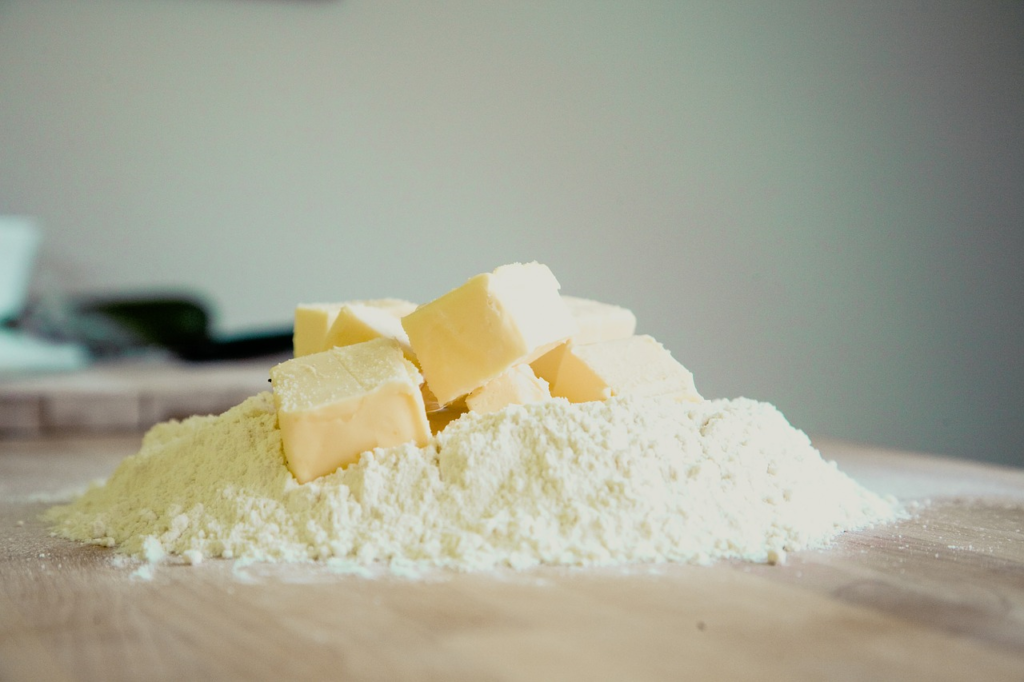
Cookies recipes can include a variety of fats such as butter, shortening, oil, or lard. Bakers will debate over details like whether coconut oil makes better cookies than butter, but in general, the amount, physical state (solid or liquid), and melt rate of fat affects cookies more than the specific type of fat used7.
Fats interfere with gluten formation, creating tender, delicious cookies. But if you add too much fat, your cookies will lack structure.
In the oven, fat melts and causes cookies to spread. When the gluten network sets, the shape of the cookie is “locked in”. The farther the fat causes the dough to spread before gluten setting, the flatter the cookie8.
Liquid fats (such as oil) spread easily and will result in flatter cookies than solid fats. Shortening, which melts slowly, results in less spreading and thicker cookies. Although not an oil, butter melts quickly and results in significant dough spreading, thus creating flatter cookies.
No matter the physical state of the fat used, chilling it before it enters the oven will prolong the time needed for the fat to melt and spread (colder starting temperatures = more heat needed to reach the melting point). If you’re swapping a fat that melts easily (ex: butter) for a fat that melts slowly (ex: shortening), starting off with cold butter can minimize in-oven spreading.
Chilled butter sounds great in theory, but if you’ve ever tried to mix a batch of cookie dough using rock-solid butter straight from the fridge, you’ll know it’s not always a very practical option. Softened butter is often easier to work with.
King Arthur Flour, a popular flour brand, recommends chilling cookie dough made with butter in order to reduce undesirable spreading. You make the dough with easy-to-mix softened butter, then chill to fix the temperature issue. Perfect, right?
Unfortunately, my boyfriend’s mom did exactly this and her crinkle cookies still ended up flat. So, was the butter to blame for the flattened crinkle cookies?
It certainly would have contributed to increased spreading, but we can’t solely hold the fat to blame. In order to solve the mystery of the flattened cookies, we need to look at one more factor for cookie shape: leavening agents.
4. Leavening agents

Leavening agents produce gas within cookie dough, causing it to expand. Without leavening agents, cookies end up flat and tough. There are three general types of leavening agents: biological (yeast), chemical (baking soda and baking powder), and steam (from moisture in the dough)9.
The crinkle cookie recipe in question used steam and baking soda (not baking powder!) as the primary leavening agents. Baking soda and baking powder may sound similar, but there’s one important distinction between the two: baking soda contains only a chemical leavening agent, while baking powder contains the leavening agent, a powdered acid, and an inert buffer.
Don’t be afraid, it’s not mad science – the “chemical leavening agent” in baking soda and baking powder is sodium bicarbonate, a harmless compound that produces carbon dioxide gas when it encounters an acid9. In cookies, the acidic ingredient is often brown sugar, which contains acidic molasses.
Baking powder, on the other hand, brings its own acid to the table in the form of a powdered acid such as tartaric acid, monocalcium phosphate, or sodium aluminum sulfate10. Cornstarch acts as a neutral buffer when the powder is in the can, but when dissolved by cookie dough moisture the sodium bicarbonate reacts with the acid and produces gas.
Not all baking powders are created equal. The properties of baking powder can change depending on the type of powdered acid used.
If the baking powder is the only acidic ingredient in the recipe, the sodium bicarbonate is completely dependent on the powdered acid dissolving to produce gas10. Sodium bicarbonate dissolves quickly, but the powdered acid can be fast or slow dissolving.
Fast-acting acids such as tartaric acid dissolves at room temperature, so the bulk of gas production happens before baking. Slow-acting acids, such as sodium aluminum phosphate, are less soluble. Because they only dissolve with the addition of heat, the bulk of gas production occurs in the oven.
Double-acting baking powders, such as Clabber Girl, contains both fast- and slow-acting acids, so gas production happens both before and during baking.
If gas production occurs too soon, the dough will fall before the gluten network sets and the leavening will be ineffective. The result? You guessed it – flat cookies.
That’s How the Cookie Crumbles
So, what ruined the cookies? As it turns out, letting the dough sit overnight caused more of a problem than swapping the shortening for butter.
Because baking soda was used as the chemical leavening agent, gas production occurred as soon as the dough was mixed. By the time the cookies were baked the next morning, all of the sodium bicarbonate had been utilized, and the cookies fell flat.
Had she used a combination of baking soda or baking powder or left the cookies in the fridge for less time, the leaving reaction might have progressed as intended and resulted in puffier cookies.
Cookie chemistry is an inherently approachable application of food science. The science is straightforward and can be utilized immediately by any average Joe in their kitchen with a spatula. They make food science concepts accessible to anyone, and that’s something I think the world needs far more of.
Unfortunately, these simple recommendations can lead bakers astray, especially when those bakers start changing multiple recipe parameters at once. In a complex system such as cookie dough, the effect of a single ingredient substitution does not necessarily predict the final result of multiple changes.
Understanding theory can help guide our decisions when working with food systems, but at the end of the day, there’s no substitute for old-fashion experimentation (or quick and easy fix for our baking woes!)
References
1 Miller, R.A., and R.C. Hoseney. 1997. Factors in hard wheat flour responsible for reduce cookie spread. Cereal Chemistry. 74:330-336.
2 Kontogiorgos, V. 2011. Microstructure of hydrated gluten network. Food Research International. 44:2582-2586.
3 Chevallier, S., G. Della Valle, P. Colonna, B. Broyart, and G. Trystram. 2002. Structural and chemical modifications of short dough during baking. Journal of Cereal Science. 34:1-10.
4 Doescher, L.C., R.C. Hoseney, and G.A. Milliken. 1987. A mechanism for cookie dough setting. Cereal Chemistry, 63:158-163.
5 Pareyt, B., K. Brijs, and J.A. Delcour. 2009. Sugar-snap cookie dough setting: the impact of sucrose on gluten functionality. Journal of Agricultural Food Chemistry. 57:7814-7818.
6 Cuq, B., F. Boutrot, A. Redl, and V. Luillen-Pellerin. 2000. Study of the Temperature Effect on the Formation of Wheat Gluten Network: Influence on Mechanical Properties and Protein Solubility. Journal of Agricultural and Food Chemistry, 48: 2954-2959. DOI: 10.1021/jf991339b
7 Abboud, A.M., G.L. Rubenthaler, and R.C. Hoseney. 1985. Effect of fat and sugar in sugar-snap cookies and evaluation of tests to measure cookie flour quality. Cereal Chemistry, 62:124-129.
8 Jacob, J., and K. Leelavathi. 2007. Effect of fat-type on cookie dough and cookie quality. Journal of Food Engineering. 79:299-305.
9 Vetter, J.L. 2003. Leavening agents. In Encyclopedia of Food Sciences and Nutrition, 2nd ed. Pages 3485-3490.
10 Holmes, J.T., and R.C. Hoseney. 1987. Chemical leavening: effect of pH and certain ions on breadmaking properties. Cereal Chemistry. 64: 343-348.
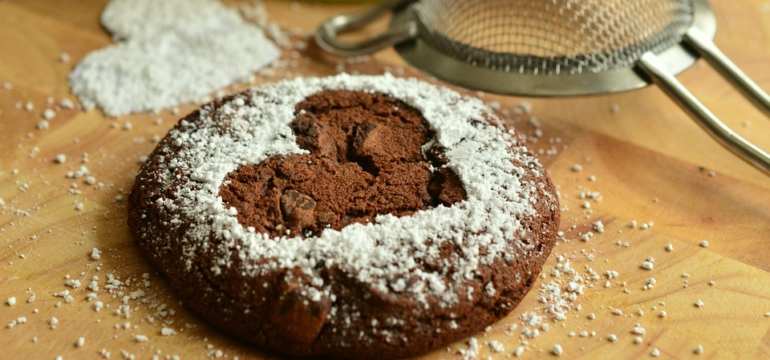

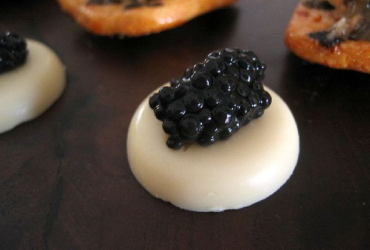



My French granny made “Sweet Dough Pie” & we never knew the recipe. It was a teacake-like crust with lattice strips & the filling was cream pie filling. In 25 years we’ve never been pleased with the teacake crust. The issues are: it either gets too “puffy”, or too “crisp” around the edges by the time the lattice is cooked through. We’ve experimented with leavenings but it’s still not as good as granny’s pie was. Any helpful insights?